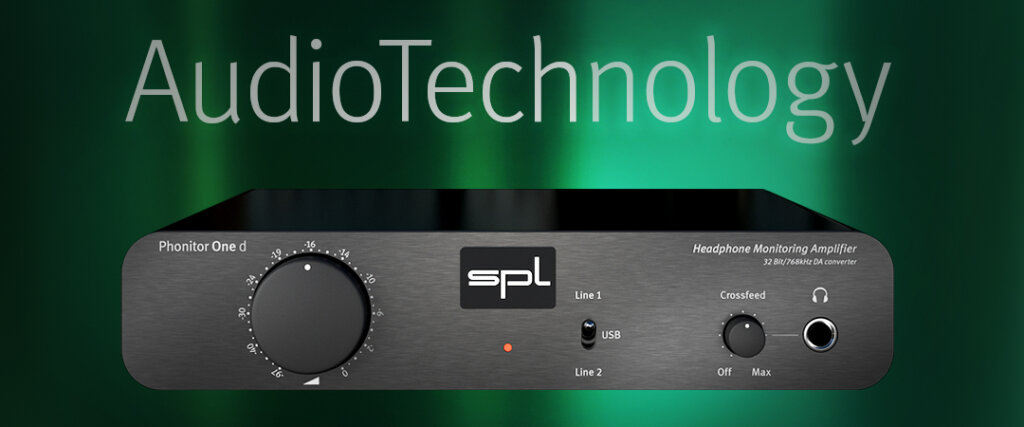“Phonitor One d offers high-end headphone amplification without nudging into snake-oil greased audiophile territory. The Phonitor Matrix is a practical tool that helps your headphone mixes to translate. The DAC is ideal for some hi-res audio enjoyment on the side.”
Find a review about the SPL Phonitor One d at AudioTechnology. Rob Holder tested the headphone amplifier and reflected on what makes the Phonitor One d stand out for him – here we provide a short summary.
Phonitor Matrix:
“The key concept behind Phonitor: headphone mixes don’t translate well. SPL’s solution is to build an analogue circuit (no DSP trickery here) that feeds a little bit of right channel into the left can, and vice versa, just as you’d hear in a control room sweet spot. Rounding out the controls are ‘Speaker Angle’, time delay of the crossfed signal, and ‘Centre Level’, allowing the user to tailor their experience. Overall, this fixes issues such as bass translation and stereo imaging when moving over to studio monitors.”
In practice:
“In mixing an EP using the One d, ‘reassurance’ is the main word that springs to mind. In making mix decisions, especially those related to stereo image and space, I could be quite confident I wasn’t being sucked into filling my phones’ unrealistically wide panorama.”
“One example was a vocal piece I arranged and mixed, using a voice synth to fill out harmonic and sonic space in the mix. Without Phonitor, I likely would have left this element quite narrow, but turning the Crossfeed up to max and hearing the mix through the the equivalent of a ‘narrow’ pair of monitors, it was evident it needed to fill out the mix far more.”
Sound:
“…a powerful and beautiful-sounding amp. It drives my 250-ohm Beyerdynamic DT1770 Pros really nicely, with an abundance of volume, along with a deep and wide soundstage.”
Conclusion:
“The Phonitor One d is clean cut, understated and powerful…”
“…what it does offer is Phonitor tech, a clean analogue path (no DSP in the way) bolted onto an amazing-sounding amplifier with killer conversion. With a demanding pair of headphones and a taste for hi-res DSD/DXD audio, studio users will get most out of the One d as a dual-use monitoring controller and music enjoyment unit.”
“Like many audio people, I’m increasingly relying on great headphones for critical listening and mixing. If you’re in the same situation or considering upgrading your monitoring with superior headphones, then you need to pay attention to what’s driving those headphones. The One d, for me, hits the sweet spot…”






